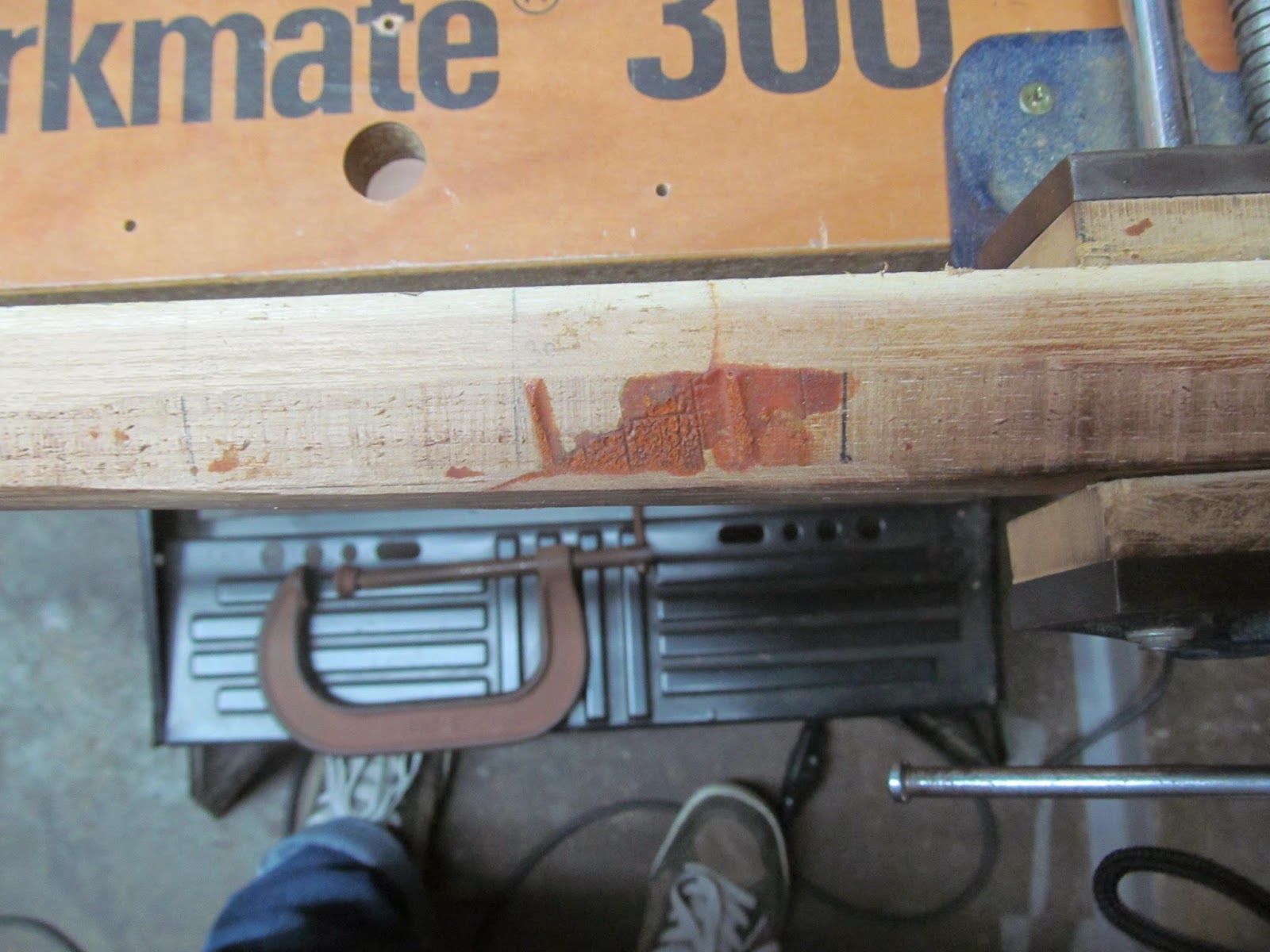I was feeling pretty good about heat treating the belly and worked from both tips toward the handle. The tips seem to have taken a fair amount of twist correction, and some small amount of reflex was materializing. I thought the glue (Unibond 800) was not heat sensitive--but it turns out I thought wrong. The glue had darkened and bubbled in spots, reminding me of the crunchy foam structure of chocolate honeycomb candy my grandmother sends from the East Coast. On inspection, it looks like I've cooked the glue and weakened the joint. A quick search on-line shows that yes, Unibond can be degraded and weakened by heat. Unibond is a great glue, and frankly I should know better: just about any glue will weaken under any temperatures high enough to scorch wood.
 |
| Cooked glue joint! |
There is a third way between these two extremes, though I'm not happy at the prospect: I can cut the splice apart along the glue lines, refit the joint, and reglue. It will be time consuming and would actually mean cutting a new splice in fresh wood just outside the glue line, then cutting a matching splice in the other limb in such a way that I pare out all of the old glued sections. The advantages are being able to glue a brand new joint while retaining most of the current length (if thoughtfully done, I might in theory only lose a half inch). On the other hand, cutting the center spliced section means having to drill a small hole in the middle of the stave in order to snake a coping saw blade through. There will also be even less room for error, since the stave has already been taken down to final width at the handle. (I might end up losing some there...)
This is not the happiest thing that could happen, but I will say this: I have learned an enormous lesson about glue and heat, and it has already changed my mind about how I want to approach my next bamboo backed osage bow project. This will be a lesson I won't forget -- and I'm sure I'll learn something new in the cutting and re-splicing process.
No comments:
Post a Comment